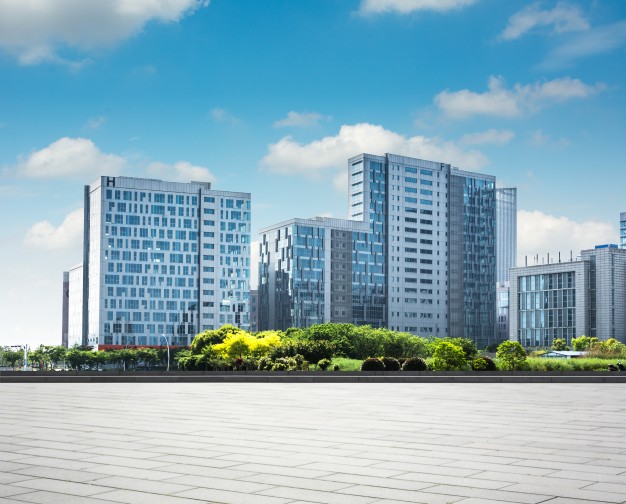Design must-dos for doing up a weekend home
October 2018
While a weekend home can be a relaxing getaway, home owners need to ensure that the home is designed, according to the climate and topography of the area Vacation homes are increasingly becoming popular as a niche housing segment, with many row house and bungalow projects coming up near metro cities in India, in the past decade. “These second homes are mostly located on the outskirts of cities,” points out Ravi Gurav, member of the MCHI. “Consequently, the infrastructure in these locations, may not be at par with that in the city. Secondly, a majority of these locations, are either above the sea level (for example, Karjat), in hilly areas or close to beaches (for example, Alibaug),” he adds. Hence, the climatic conditions at these locations, are not the same as that in cities and this needs to be considered, before designing the second home. Ateev Gala, executive director of the Vijay Group, feels that the climate and topography of an area, can be leveraged while designing a weekend home. “The architectural theme and concept of the second home, can boost its ‘enjoyability quotient’. For example, one can design the homes with a colonial or mediterranean theme, with ample fresh air, sunlight and natural views, to match the requirements of people,” he says.
Things to consider, while designing a weekend home
A well-designed house, should keep its occupants comfortable, in all seasons. “To achieve this, one should hire an architect or engineer, who is well-versed with the kind of materials that will sustain in such climate. They must also lay down a practical plan that ensures that all the required materials are easily available and affordable,” advises Sushil Raheja, CEO, Raheja Homes Builders & Developers.
Site layout:
If it is a low-lying area, consider a raised platform for the house. If the area has trees and greenery, opt for a layout that does not harm the vegetation. One should also check the soil of the place and ensure that the drainage system can cope with the soil and water conditions.
Regions that receive substantial rain:
In such places, the humidity levels are higher during the day, while the ambient temperature is lower during the night. Hence, one should choose building materials that allow for air circulation and also insulate from the cold nights. Earth as a building material for walls, is the best possible choice and can be used in the form of stabilised blocks or as rammed earth panels. Large overhanging roofs can be used, to prevent the walls from getting soaked in heavy rains. The windows must be protected, using a chajjah or box, to prevent water from entering the house. The appliances and furniture must be properly coated, to protect them from moisture, while the the flooring should be non-skid.
Beaches and coastal areas:
These areas have very high humidity throughout the day. Hence, homes in such regions should have a well-designed ventilation and cooling system, to dehumidify the indoor air. These places also receive generous amount of sunshine and ambient temperatures can be very high during the day. Hence, a greater thermal mass for the walls – to retain the heat and not allow it to pass indoors, is very important. Locally-sourced stones or even earth, can be a very good eco-friendly alternative to regular bricks or concrete blocks. Coastal areas also have salty air. Thus, the appliances and furniture must be treated accordingly, to avoid rusting.
Climatic condition:
Ricky Doshi, director, ARD Studio explains, “Places like Lonavala, Khandala and Deolali, have climatic conditions that differ from Mumbai. They are located at a higher altitude, thereby, making the air more dry than in Mumbai. These regions receive more rainfall and have cooler temperatures in winters. These factors have to be considered, while designing the home.”
Hill slopes or mountains:
t is very important to anchor the structure properly, on such terrain. Stilt foundations provide a viable solution, reducing the footprint of the dwelling and preventing it from getting in the way of surface aquifers, if any, along the slopes. At the same time, the superstructure above, must be lightweight and thermally insulating. Wood is a good alternative for the flooring and walls and helps to control indoor temperatures. Stone shingles can be used for the roof, to protect from harsh sunlight. On flatter regions, stone can be used for constructing the entire building, as it is abundantly available.
Expenditure incurred
According to Ashish Bhuvan, principal architect and partner, IdeinLab Architects, “If one were to use a single set of materials across all terrains, one would end up spending more on the operational and maintenance costs of the building during its lifecycle. Hence, it is better to chose locally available materials and systems, which are cost-effective and suit the location.” However, additional expenditure may be needed, to build a house, based on the topography and types of materials that are required. In some cases, this may be 15%-20% higher than the cost of building a traditional house in a temperate zone. Also, local materials may not be available and one may need to spend on transportation costs.
Also read: Tips For How to Decorate A Vacation Home
Back to All Thane Real Estate Resources, Thane Property News and Articles
Share This:
To Know More about Luxury Home in Thane , Visit CREDAI MCHI Thane Unit
Source: housing.com


